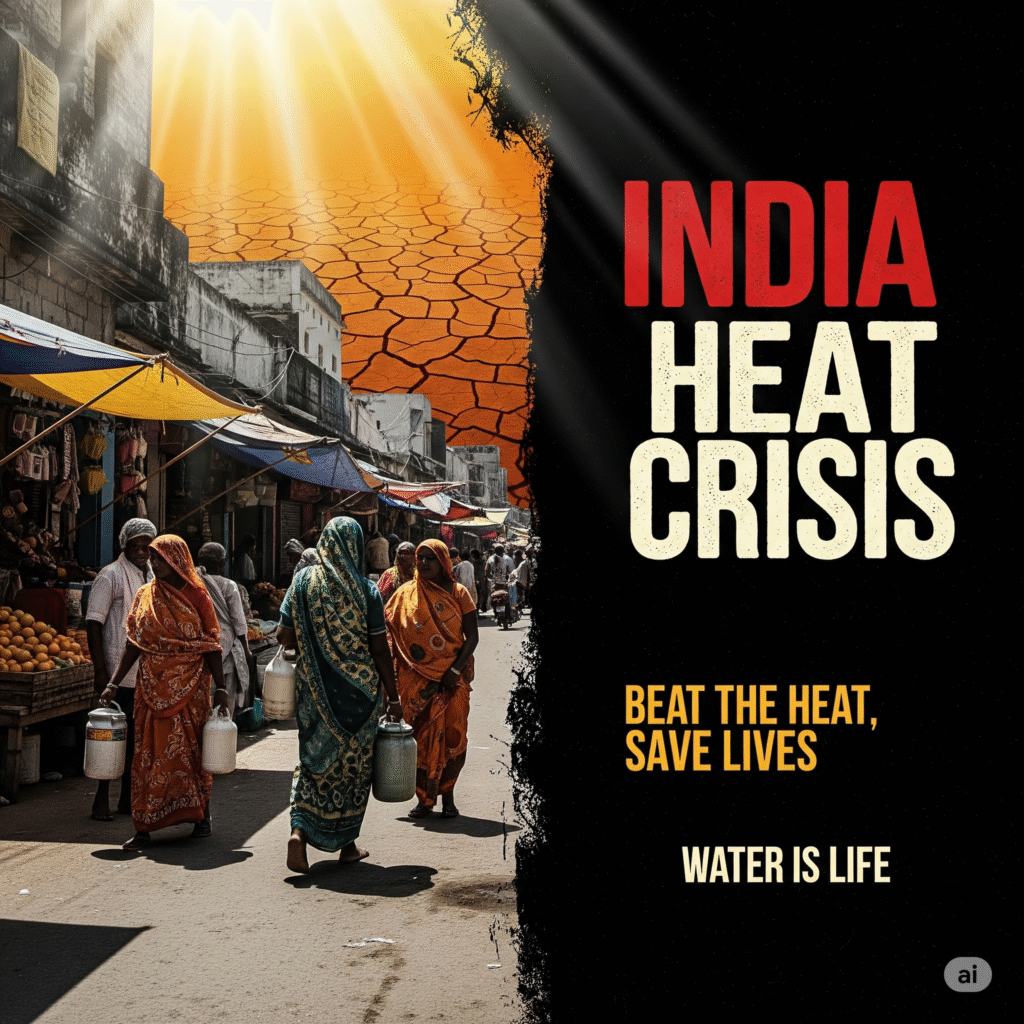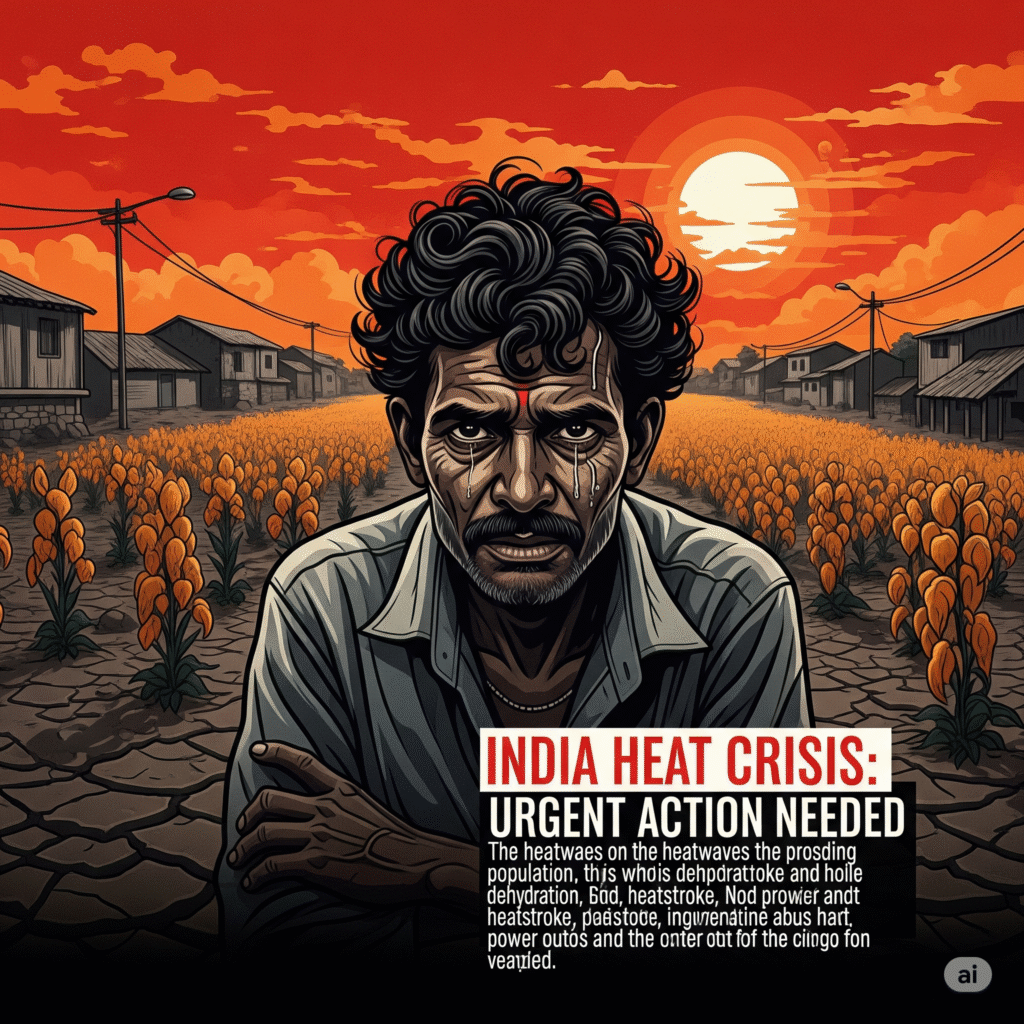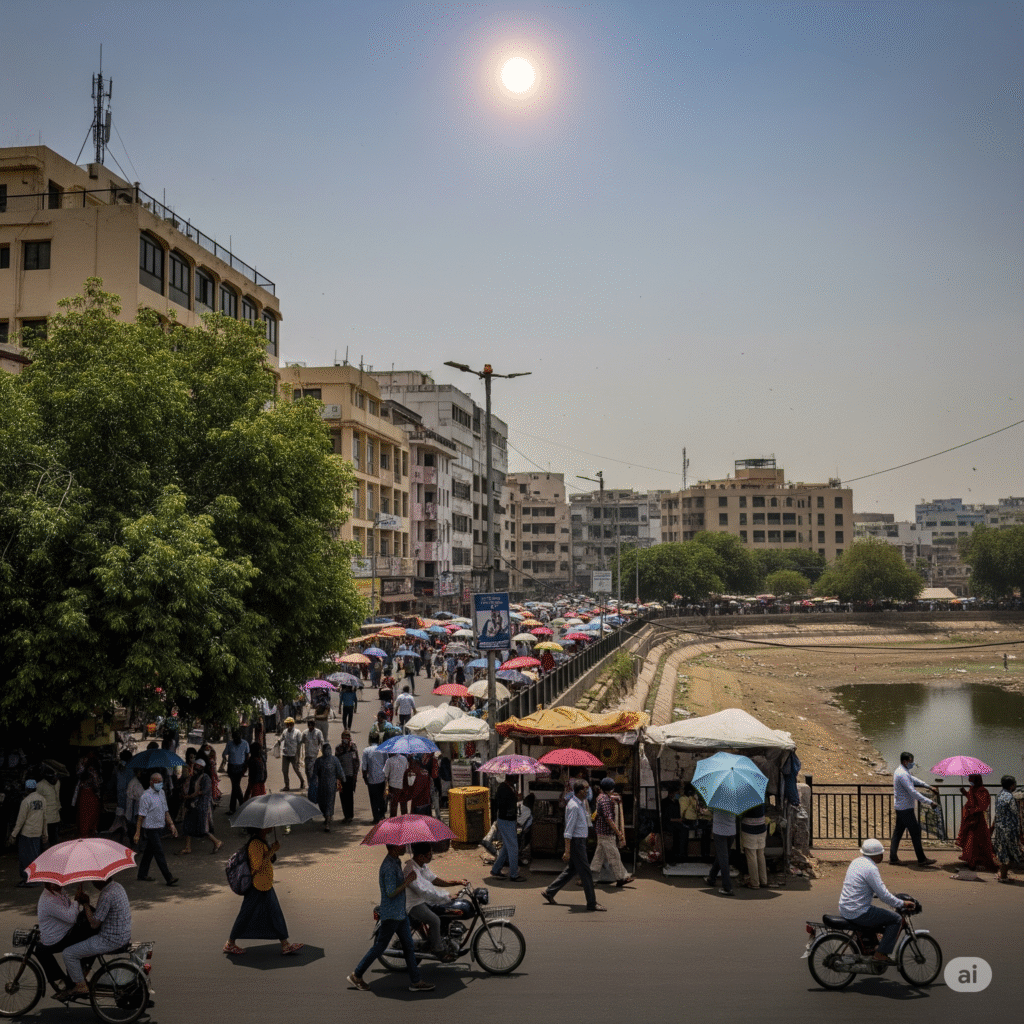Introduction: Upcoming Heat Waves in India 2025: Dates, Regions, and Safety Tips
As climate change accelerates, India faces increasingly severe heat waves that threaten public health, infrastructure, and economic stability. The India Meteorological Department (IMD) warns that 2024 may break temperature records, with several regions likely experiencing sustained periods above 45°C. This article provides a detailed examination of:
- Regional temperature projections and their underlying causes
- Health implications of extreme heat exposure
- Immediate protective measures for different populations
- Policy interventions and community adaptation strategies
- Long-term solutions for heat resilience
Regional Heat Wave Projections: A Detailed Breakdown
1. Northern India’s Scorching Frontier

Primary Hotspots:
- Delhi NCR (projected 45-48°C)
- Rajasthan’s desert belt (Churu, Jaisalmer: 47-50°C)
- Punjab-Haryana plains (44-47°C)
Contributing Factors:
- Desertification effects from the expanding Thar Desert
- Urban heat island amplification in metropolitan areas
- Declining groundwater levels reducing natural cooling
Unique Characteristics:
- Nighttime temperatures remaining above 35°C in urban centers
- Frequent power grid failures during peak demand periods
2. Central India’s Expanding Heat Zone
Temperature Outlook:
- Vidarbha region (Nagpur: 45-48°C)
- Madhya Pradesh (Gwalior: 44-47°C)
- Chhattisgarh plains (42-45°C)
Emerging Concerns:

- Accelerated drought conditions in agricultural zones
- Increased incidence of heat-related worker fatalities
Health Impacts: Beyond Immediate Risks
Physiological Effects of Heat Exposure
Acute Conditions:
- Cardiovascular strain (20-30% increased heart attack risk)
- Renal stress from chronic dehydration
- Neurological impairment in vulnerable populations
Vulnerability Spectrum:
- Outdoor laborers (construction, agriculture)
- Urban poor in non-ventilated housing
- Pediatric and geriatric populations
Psychological Consequences
- Heat-aggravated mental health episodes
- Cognitive performance decline (up to 15% in extreme heat)
- Sleep deprivation effects from elevated nighttime temperatures
Comprehensive Protection Framework
Individual-Level Strategies

Hydration Protocol:
- Electrolyte-balanced fluid intake schedule
- Monitoring urine color as hydration indicator
Thermal Regulation Techniques:
- Phase-change cooling garments
- Strategic use of evaporative cooling
Community Interventions
- Neighborhood cooling center networks
- Vulnerable population registry systems
- Heat-aware urban design modifications
Policy Innovations and Infrastructure Solutions
Government Heat Action Plans
- Ahmedabad’s pioneering early warning system
- Telangana’s mobile alert infrastructure
- Odisha’s community outreach programs
Sustainable Urban Cooling
- Cool roof implementation programs
- Urban forestry expansion initiatives
- Smart grid development for energy resilience
Future-Proofing Against Rising Temperatures

Climate-Adaptive Architecture
- Passive cooling building techniques
- Heat-resilient material innovation
Agricultural Adaptation
- Drought-resistant crop development
- Micro-irrigation system adoption
Technological Solutions
- AI-powered heat risk prediction models
- Distributed renewable energy systems
Conclusion: A Multidimensional Approach to Heat Resilience
Addressing India’s heat challenge requires coordinated action across individual, community, and policy levels. By implementing these science-backed strategies while investing in long-term adaptation measures, we can mitigate health impacts and build sustainable heat resilience.
Key Takeaways:
- Region-specific preparation is essential
- Heat protection requires both behavioral and infrastructural changes
- Policy innovation must keep pace with climate projections



